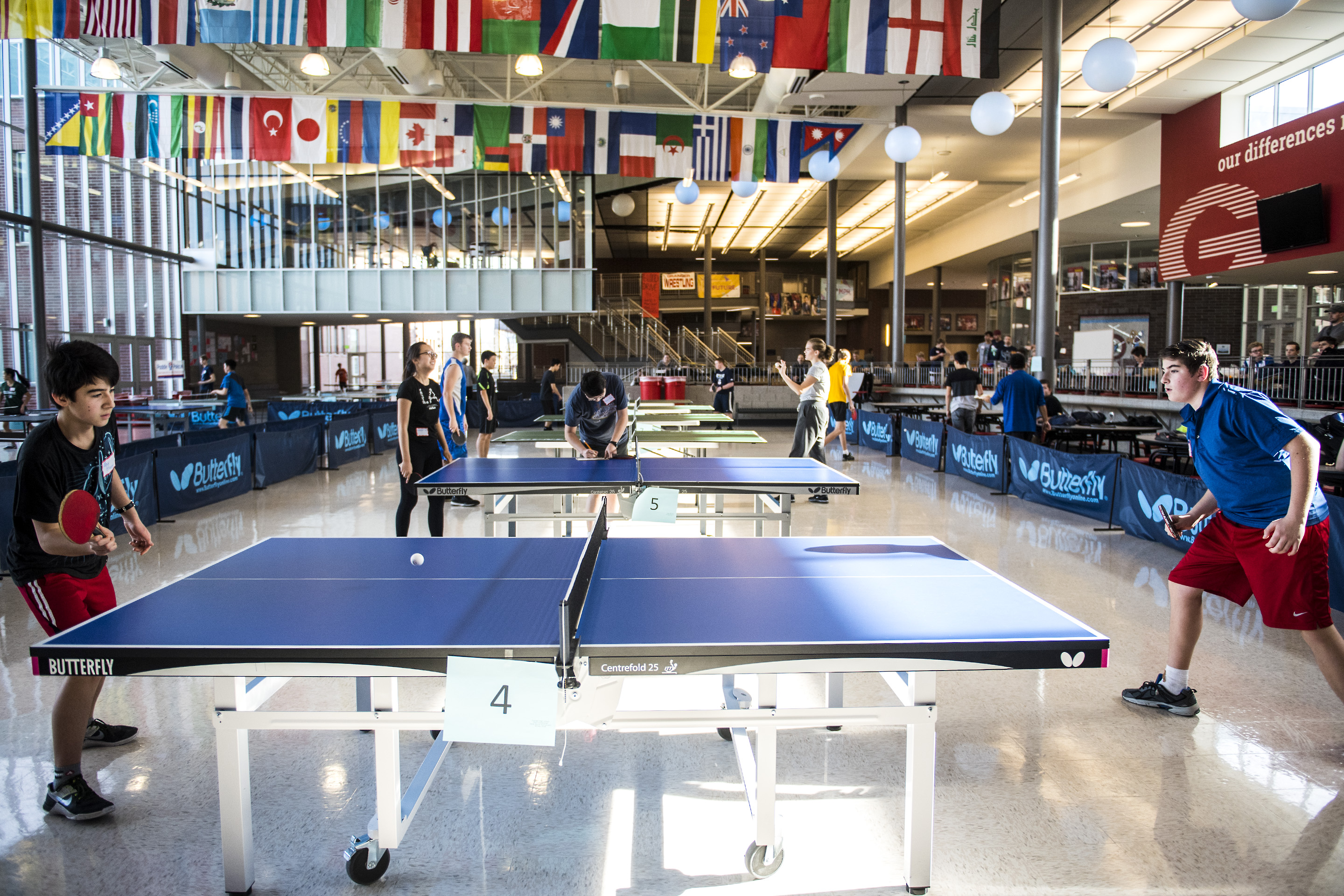
Busy schedules can make family time tough, but indoor sports are a great solution. They offer year-round opportunities to connect, compete, and create memories. Venues like bowling alleys or community centers provide safe, distraction-free spaces for bonding in any season.
Benefits of Indoor Sports for Families
Enhances Communication and Teamwork
Indoor sports naturally encourage family members to communicate more effectively. When playing doubles bowling or working together on a rock climbing challenge, families must coordinate, strategize, and support each other. These interactions often reveal different sides of family members’ personalities and create opportunities for meaningful conversations that might not occur during regular daily routines.
Team-based indoor activities also help develop problem-solving skills as families work together toward common goals. Children learn to express their ideas clearly while parents practice active listening and patience. These communication skills developed during play often transfer to other areas of family life, improving overall relationships.
Provides a Fun Way to Stay Active
Physical activity becomes more enjoyable when shared with loved ones. Indoor sports remove many barriers that prevent families from exercising together, such as extreme weather, safety concerns, or lack of appropriate outdoor spaces. Swimming at an indoor pool, playing basketball at a recreation center, or even engaging in active games at entertainment venues keeps everyone moving while having fun.
Regular physical activity together also helps establish healthy lifestyle habits for children. When exercise is associated with family fun rather than obligation, kids are more likely to maintain active lifestyles as they grow older. Parents benefit too, as family sports activities provide motivation to stay physically active even when personal workout routines might otherwise be neglected.
Creates Lasting Memories
Indoor sports activities often become the stories families tell for years to come. Whether it’s celebrating a child’s first strike at the bowling alley, cheering each other on during a challenging rock climbing session, or laughing together after a particularly competitive game of ping pong at tables like those famous in Utah, these moments become treasured family memories.
Unlike passive entertainment like watching movies together, active indoor sports create shared experiences that engage multiple senses and emotions. The excitement of competition, the satisfaction of improvement, and the joy of shared accomplishment contribute to memories that feel more vivid and meaningful over time.
Popular Indoor Sports for Families
Bowling
Bowling stands out as one of the most accessible indoor sports for families. Most bowling alleys offer lightweight balls for children, bumper lanes for beginners, and scoring systems that level the playing field between different skill levels. The social atmosphere of bowling alleys, combined with the ability to chat between frames, makes this sport particularly good for family bonding.
Many bowling centers also offer special family packages, cosmic bowling events with music and lights, and even birthday party options that can make the experience feel extra special.
Ice Skating
Ice skating provides a unique indoor experience that many families find magical. Public skating sessions at indoor rinks offer opportunities for families to learn together, help each other, and enjoy the graceful challenge of moving on ice. Even beginners can have fun simply trying to stay upright while more experienced family members offer encouragement and assistance.
Ice skating also provides excellent exercise that works different muscle groups than most other activities, making it a great complement to a family’s overall fitness routine.
Rock Climbing
Indoor climbing gyms have become increasingly popular and accessible, offering climbing walls suitable for all ages and skill levels. Rock climbing builds both physical strength and mental confidence while requiring trust and communication between climbing partners.
Many climbing facilities offer family packages and beginner classes, making it easy for families to start this activity together safely. The problem-solving aspect of finding climbing routes appeals to many children and adults alike.
Swimming
Indoor pools provide year-round opportunities for families to swim together. Swimming offers excellent low-impact exercise suitable for all fitness levels while providing opportunities for both competitive and recreational activities. Families can race each other, play water games, or simply enjoy casual swimming together.
Many community centers and fitness facilities offer family swim times, swimming lessons for multiple family members, and pool areas designed specifically for family recreation.
Basketball
Indoor basketball courts allow families to engage in both casual shooting games and more organized play. Basketball can be easily modified for different ages and skill levels—younger children can use lower hoops or focus on basic dribbling skills while older family members play more competitively.
The fast-paced nature of basketball provides excellent cardiovascular exercise, and the sport’s emphasis on teamwork makes it particularly valuable for family bonding.
Games Rooms
Entertainment centers with games rooms offer diverse indoor activities under one roof. From arcade games and air hockey to billiards and mini-golf, these venues provide multiple options for family fun. Game rooms work particularly well for families with varied interests, as different family members can gravitate toward activities they enjoy while still spending time together.
Tips for Planning Indoor Sports Activities
Choose Activities That Suit All Ages and Fitness Levels
Successful family indoor sports activities consider the abilities and interests of all participants. Look for venues that offer equipment sized for different ages, such as lightweight bowling balls or adjustable basketball hoops. Some activities naturally accommodate different skill levels—swimming, for example, allows each family member to participate at their own pace while still enjoying time together in the pool.
Consider rotating through different activities to give each family member chances to excel and enjoy their preferences. This approach also prevents any single activity from becoming routine or boring.
Set Achievable Goals to Maintain Motivation
Focus on participation and improvement rather than perfect performance. Celebrate small victories like a child’s improved bowling form or everyone completing a beginner rock climbing route. Setting goals based on effort and enjoyment rather than competition keeps activities positive for all family members.
Consider tracking progress over time—many indoor sports facilities offer loyalty programs or regular customer perks that can provide additional motivation for continued participation.
Make It a Regular Family Event
Consistency helps indoor sports become anticipated family traditions rather than occasional activities. Try to schedule regular indoor sports outings, whether weekly, bi-weekly, or monthly, depending on your family’s schedule and budget.
Having regular indoor sports dates gives family members something to look forward to and helps ensure that quality family time doesn’t get pushed aside by other commitments. Regular participation also allows everyone to improve their skills and enjoy activities more as they become more comfortable with them.
Conclusion
Indoor sports give families a fun way to spend time together, strengthen bonds, and create lasting memories. Focusing on fun over performance makes these activities more meaningful. From bowling to rock climbing, indoor sports bring families closer through shared experiences and teamwork.
